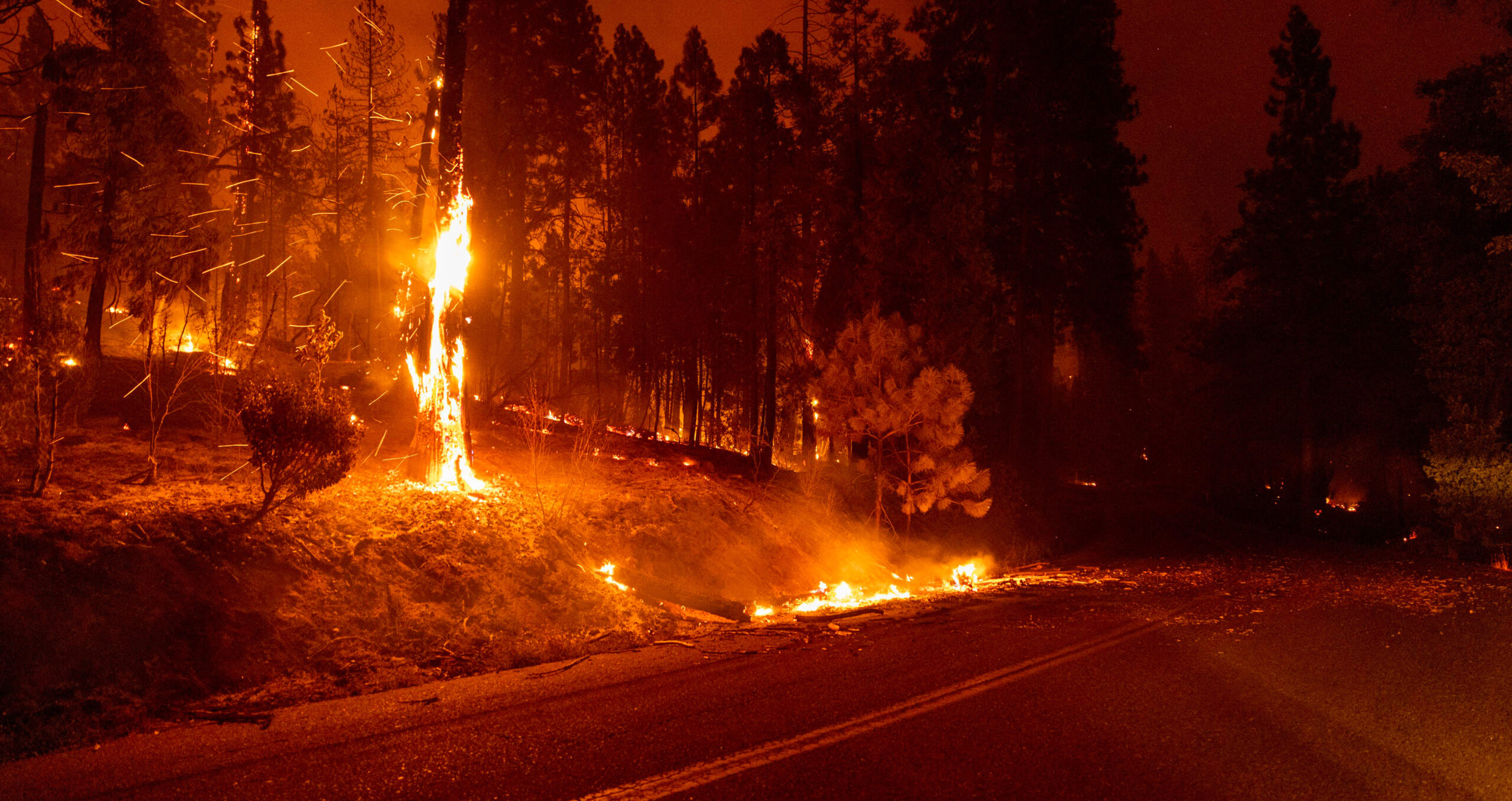

In his now infamous presentation at a Financial Times conference, HSBC Asset Management’s former head of responsible investing, Stuart Kirk, suggested there should be more focus on climate adaptation. He may have a point.
The climate is changing fast, with record high temperatures and wildfires across Europe just the latest sign of a planet warming up. Yet while money is pouring into efforts to mitigate climate change, far less is being invested in climate adaptation to prepare us for this new, hotter and more unpredictable world.
According to a December 2021 report by the Climate Policy Initiative, global adaptation finance flows were worth about $46bn in 2019/20, out of a total of $632bn invested in climate finance. However, the report found that this figure had increased by almost 53% in the previous two years, with adaptation’s total share of climate finance increasing to 7%.
Dealogic data, meanwhile, shows that global climate adaptation finance grew from $23.6bn in 2017 to $41.2bn in 2021, and $30.6bn to date in 2022. The Europe, Middle East and Africa region is leading the way, accounting for three-quarters of all adaptation financing in 2021.
Even so, in her foreword to the United Nations Environment Programme’s latest Adaptation Gap Report, UNEP executive director Inger Andersen, wrote: “The gap between what we need to spend to adapt and what we are actually spending is widening.” She added that the estimated costs of adaptation continue to rise, and could reach $280-500bn per year by 2050 for developing countries alone.
Acceptance is the first step
Marie Freier, Barclays global head of cross asset ESG research, says one reason adaptation is more challenging than mitigation is that there is an element of resignation about it, making it less attractive as a headline. At the same time, mitigation and adaptations are often blended together, or have dual benefits, which makes it harder to distinguish between the two, especially in areas such as data capture, identification and monitoring.
Freier says when it comes to adaptation financing, the largest amount of investment is going into areas such as drought-resilient crops and irrigation technologies. However, heat could be an interesting area of focus, with cities like Athens now employing heat officers, she says. “The adaptation in the built environment for our day-to-day operations is obviously critical.”
At the same time, we need to crystallise the financial opportunities and incentives, she adds. “At the moment they’re a bit obscure. One of the other reasons it’s unattractive at the moment, or unclear, is because a lot of it is about avoided costs. We need to get to a point where you can actually calculate the avoided costs, so that you can create that financial incentive.”
Private sector involvement
Andrew Howard, head of sustainable investment at asset management company Schroders, says we are past the tipping point of most of the world accepting that the climate is changing. “[Now] it becomes about how we get real coordination across policymakers, across corporates, across investors, to work together towards shared goals,” he says, adding that when it comes to adaptation, defining what those goals are has not had the same amount of attention compared to the shared goals around reducing emissions.
“What we see through things like the COP26 process [is] there needs to be a realisation that adaptation is an unavoidable part of the discussion,” he says.
A major challenge is to secure more private sector involvement, as seen in the recent Climate Policy Initiative report, which found public entities were behind 98% of adaptation finance.
Salima Lamdouar, vice president and portfolio manager for sustainable fixed income at global asset management firm AllianceBernstein, says: “We all know what adaptation should look like: it’s strengthening the infrastructure, and that tends to be the public sector. It’s building natural capital, and that also tends to be public sector led. It’s not the natural role of the private sector to build flood defences or restore mangroves.”
Lamdouar points out that while the issuance of green bonds has boomed in recent years, only a mid single-digit percentage of these actually have use-of-proceeds categories that relate to climate adaptation.
Even if we reach our climate goals and the world only warms up by 1.5 degrees, there’s going to be a huge acceleration in climate events, she says. “That acceleration will create a need for private sector-led solutions with nearer term visibility on financial returns.”
Hidden investments
Some believe the value of finance going into climate adaptation is being underestimated. “We think adaptation is not well understood and that there is considerable spending that is supporting adaptation and resilience to climate change today,” says Jay Koh, managing director of the Lightsmith Group and chair of the Global Adaptation and Resilience Investment working group. Lightsmith Group claims to be the first private equity platform dedicated to adaptation and climate science.
Not only is more money going into the space than many think, but Koh says that Lightsmith Group sees enormous opportunities. “We identified about 20 different sectors of the economy that are relevant to resilience and adaptation to climate change. We’re focused on six of those areas, four of them in data and analytics,” he says.
Others also see strong investment opportunities in data. With better data to hand, investors and governments will be able to calculate the avoided losses, says Barclay’s Freier. “Then I think financial markets will quite quickly step in, but I think we’re still in that phase of doing that groundwork,” she says.
It could take up to five years to move to the next stage – though that could speed up in the light of what we’re experiencing now, she adds: “Unfortunately, there’s nothing like real losses to sharpen the mind.”
Unequal impact
For those who are focused on this area, it can be hard to work out the exact role that private capital should play.
Freier says there are the usual candidates in terms of the multilateral development banks, which are very active. “They’ve been leading the way, which can be very helpful in establishing standards and also creating instruments to bring in private capital. The question from the private sector perspective will be ‘what kind of timelines for returns are we talking about?’”
AllianceBernstein’s Lamdouar highlights the firm’s fiduciary duty to create good risk-adjusted investments, and questions whether the traditional asset classes even work in this space. “Large-cap equity may not be the place to address adaptation,” she says, adding: “Even in the bond space I think we should think further: think beyond green bonds, beyond sustainability linked bonds. We recently partnered with the World Bank to invest in an outcome-based project in South Africa. The payout of the bond was linked to the success of the project.”
Another challenge is that climate adaptation solutions and financing are not equally urgent throughout the world: parts of Africa, for example, are expected to suffer particularly badly from rising temperatures and droughts. In their Nationally Determined Contributions as part of the 2016 Paris Agreement, 40 African nations put their investment needs for climate adaptation at around $331bn by 2030, with most of this yet to be committed.
It’s also likely to be a greater challenge to get private capital engaged with climate adaptation projects and initiatives in the developing world, which puts the onus to supranational entities such as the World Bank and the European Investment Bank.
Yet going forward, many investors see private sector participation in climate adaptation financing as a no-brainer.
“One of the few things that we have some visibility and foreseeability around is that climate change will continue to unfold,” says Lightsmith Group’s Koh. “That is probably one of the few investment themes that is reasonably certain – compared with, say, the outcome of the Russia-Ukraine war, the credit cycle or consumer behaviours.”
Similar Articles

In Charts: Redemptions drag global climate fund flows to lowest level in four years

In Charts: Canada, Japan, South Korea ‘blocking clean energy transition’ with fossil fuel finance


